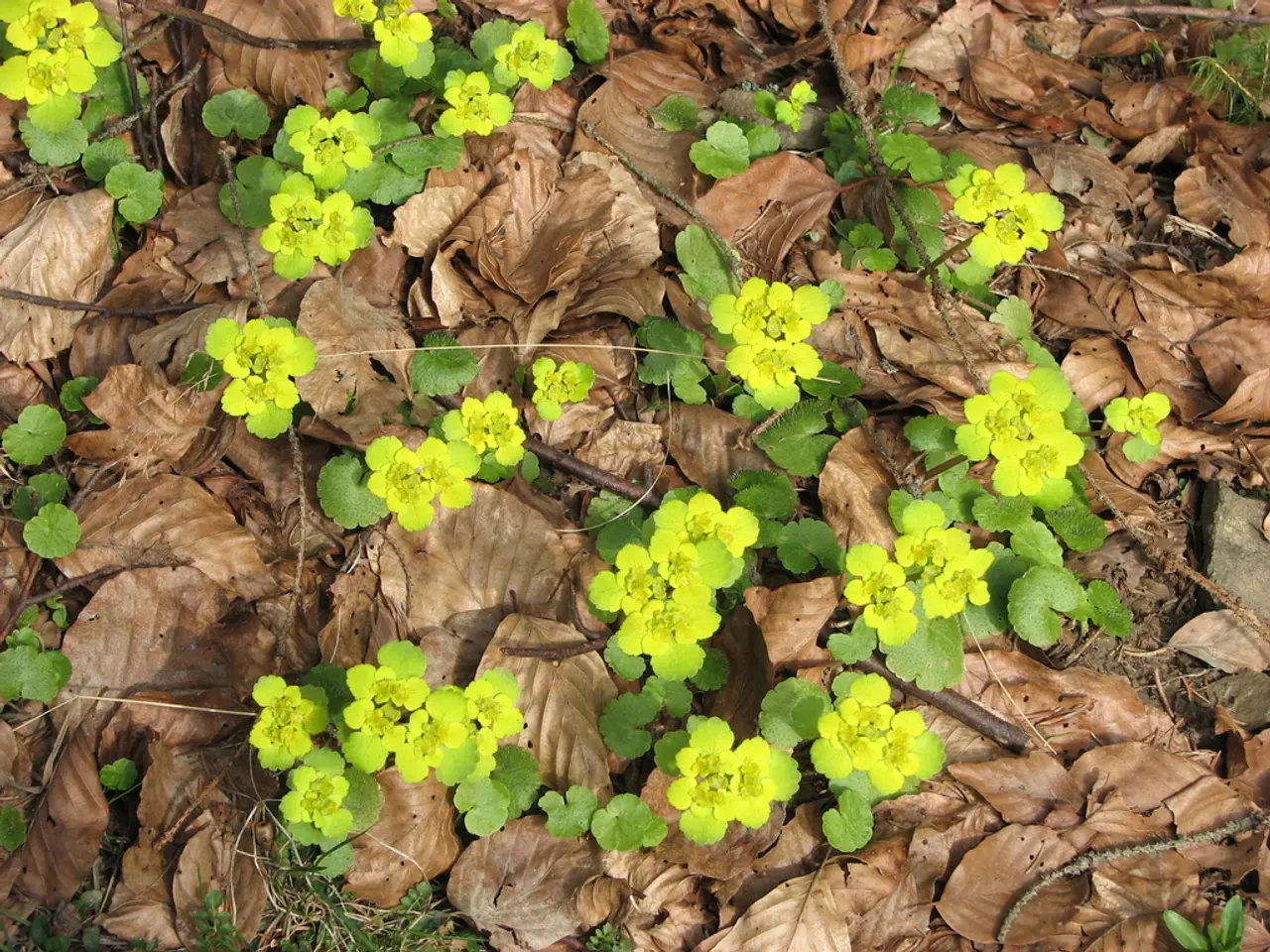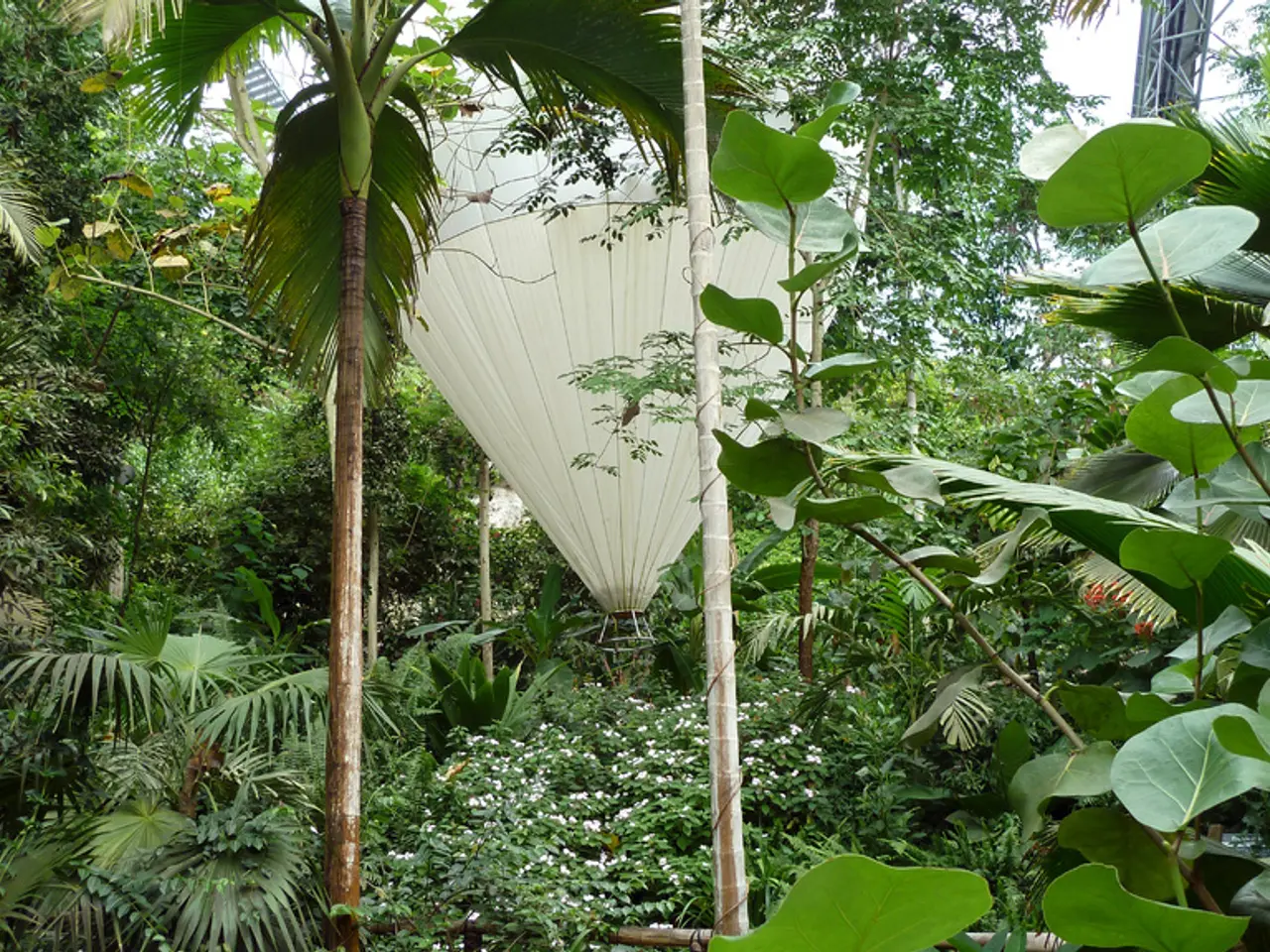Unlocking the Mysteries of Fertile Tropical Soil for Thriving Plant Life
In the world of houseplants, tropical species have become a popular choice for their exotic appeal and vibrant foliage. To ensure the success of cultivating these plants, it's crucial to provide them with a suitable growing medium. Here's a guide to creating the optimal soil mix for thriving tropical houseplants.
First and foremost, tropical plants thrive in a loose, well-drained, fertile soil high in organic matter. A good growing medium should provide optimal drainage, moisture retention, and nutrient availability. Soils with a mix of sand, silt, and clay—often loamy soils—are ideal because they provide medium to high water-holding capacity and sufficient aeration.
Good drainage in potting soil is crucial to prevent waterlogging, which can lead to root rot and other plant diseases. Moist but well-drained soils are preferred to maintain consistent moisture without causing root rot. To achieve this balance, you can customize your potting soil to meet the specific needs of different plants by adding more perlite for better drainage or incorporating compost for added nutrients.
Perlite, with its ability to retain water, is perfect for moisture-loving plants as it can hold 3-4 times its weight in water, acting as a consistent reservoir for plants. On the other hand, perlite is ideal for drought-tolerant plants that require superb drainage, such as cacti, as it provides excellent drainage and helps prevent waterlogging.
Vermiculite, another mineral-based additive, also plays a vital role in creating the perfect soil mix. With its high water-holding capacity, vermiculite is perfect for moisture-loving plants, retaining water to ensure consistent moisture.
When creating a soil mix for tropical plants, it's important to understand the plant's natural habitat and specific needs, as different tropical plants have different growing requirements. Most tropical plants typically prefer acidic soil, usually in the pH range of about 6.0 to 7.0, to optimize nutrient availability.
In summary, the optimal soil for tropical plants is a moist, nutrient-rich, well-draining loam with a slightly acidic to neutral pH (6.0–7.0), ample organic matter, and balanced texture to support both water retention and aeration. This environment ensures healthy root growth, nutrient uptake, and overall plant vigor.
Making your own soil mix can improve your plants' performance compared to using bagged container mixes available at nurseries. Perlite and vermiculite can be purchased in bags from home improvement stores or garden centres. When creating a soil mix, you can use either or both of these additives, depending on the specific needs of your tropical plants.
To extend the lifespan of your soil mix, it's recommended to repot plants annually and improve the mix with organic matter and perlite. Peat, a common ingredient in potting soil, decomposes quickly, leading to compaction and impeding drainage. By regularly refreshing your soil mix, you'll ensure your tropical plants remain healthy and thrive in their new home.
[1] Soil pH and Nutrient Availability for Tropical Plants (2021). [online] Available at: https://www.hortau.com/blog/soil-ph-and-nutrient-availability-for-tropical-plants/
[2] The Ultimate Guide to Growing Tropical Plants Indoors (2020). [online] Available at: https://www.gardeningknowhow.com/houseplants/tropical/tropical-houseplants-guide.htm
[3] The Importance of Soil Drainage for Tropical Plants (2019). [online] Available at: https://www.thespruce.com/soil-drainage-for-indoor-tropical-plants-1402445
[4] The Best Soil for Tropical Plants (2020). [online] Available at: https://www.thespruce.com/the-best-soil-for-tropical-plants-1402442
- Cultivating a healthy lifestyle and maintaining a lively home-and-garden can be achieved by creating an optimal soil mix for thriving tropical houseplants, which enhances soil health and plant vigor.
- To ensure thriving tropical houseplants, it's essential to consider the intricacies of their natural habitat, such as their preference for nutrient-rich, moist, and well-draining loam, as well as the impact of lifestyle factors like soil pH, drainage, and organic matter content on their health.







